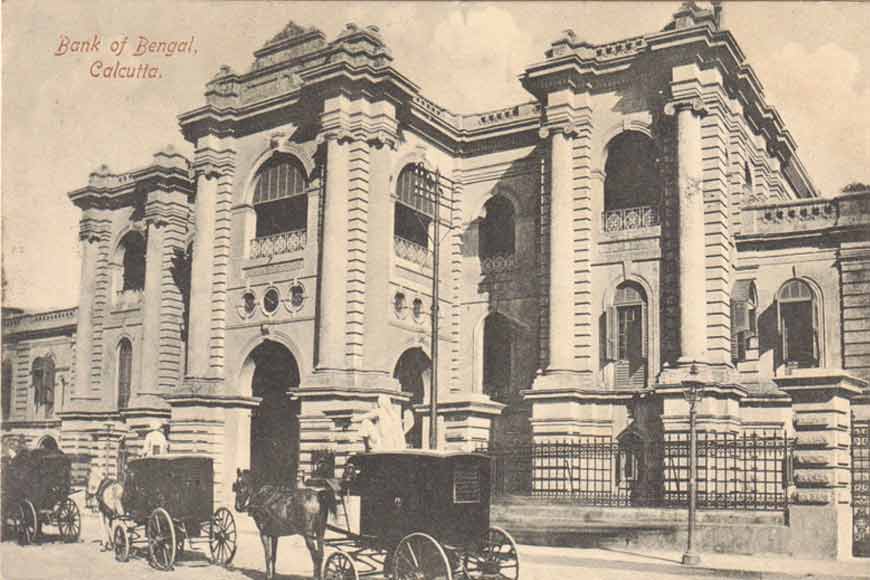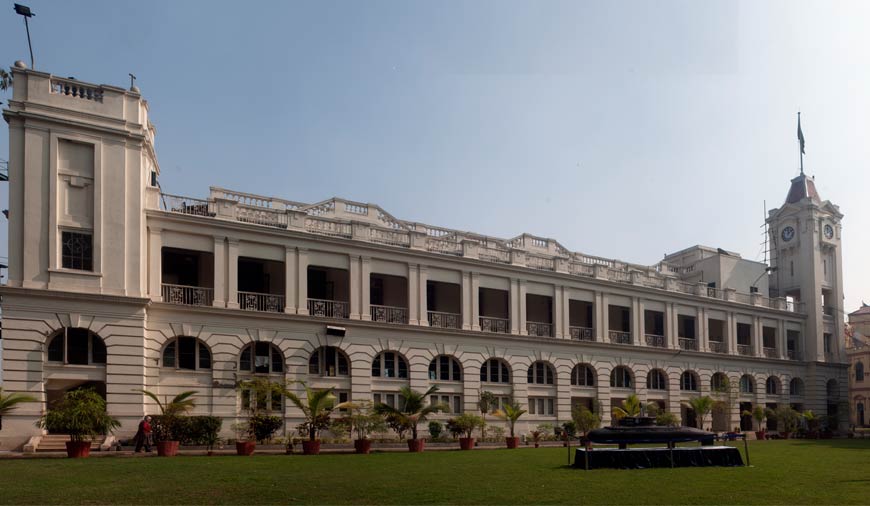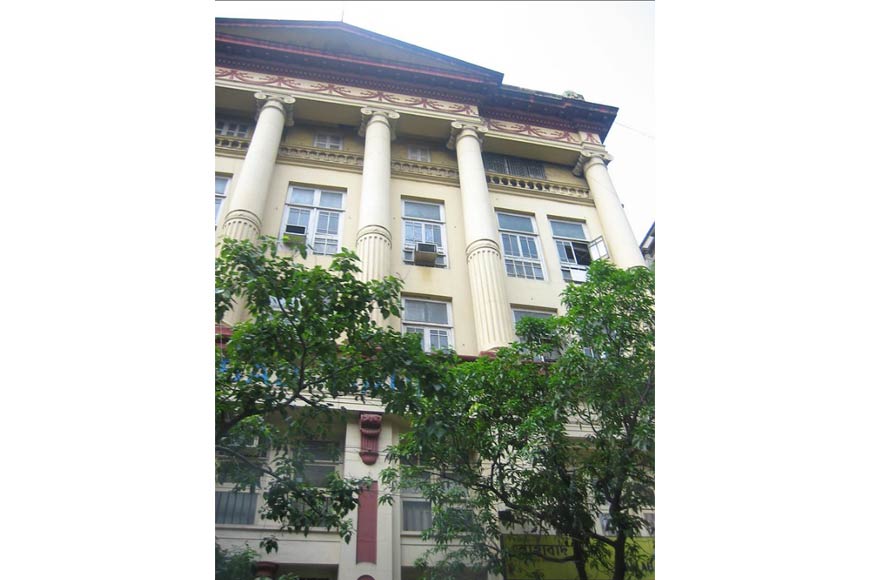Moral policing to financial fraud, Bengal’s ‘pioneers’ who showed the way

Bank of Bengal building
With the uproar generated by Mumbai lawyer Vedika Chaubey filing a case against actor Ranveer Singh for his nude photoshoot, and the ongoing Enforcement Directorate (ED) proceedings against West Bengal education minister Partha Chatterjee and his associates for alleged financial irregularities, we are collectively grappling with what one might call ‘socio-economic offences’. So we thought this might be a good time to look back on when these offences became offences - that is, when did certain acts become criminal?
The journey takes us back to the second half of the 19th century, right after the Sepoy Mutiny of 1857. As administrative control of India passed from the British East India Company to the Crown, there was a general hardening of stances on the part of the British-Indian administration. Where earlier socio-political reforms such as those initiated by William Bentinck (Governor-General of India, 1828-35) were mindful of maintaining harmony between the British and the Indians, “the new spirit was cold, bureaucratic, optimistic and racially arrogant”.
Naturally, the legal system increasingly began to operate on English principles and only English principles, with Bengal becoming the testing ground by virtue of being the principal province of British India. Future decades thus gave rise to several categories of ‘crime’ that were seen as such by the Western value system, including socio-economic offences, and the rise of the ‘economic offender’.
Based largely on English criminal law, the Indian Penal Code (IPC), which we still adhere to, was introduced in 1860. Besides precisely defining such ‘traditional’ crimes as murder, dacoity, robbery, burglary, and theft, the new code included a vast repertoire of anti-social behaviour which had previously escaped the long arm of the law. Many of these offences were of social and economic significance, and a whole chapter of the IPC defined and prescribed punishments for “offences affecting the public health, safety, convenience, decency and morals,” while another specified “offences relating to religion”; a third, offences “relating to marriage”
Not that all of it was detrimental to the Indian value system. Indeed, one of the most positive outcomes of these reforms was an increased focus on crimes against women and children, such as rape and female infanticide, or such annoying behaviour as “singing obscene songs and uttering obscene words” in public. However, there were also acts which Indians largely viewed as indecent, but did not consider worthy of punishment - such as urinating or bathing in public, or begging for alms. Regardless, these were henceforth to become legally punishable.
Needless to say, this created considerable bad blood between law enforcement (primarily police) and the natives. Particularly since the British did not seem to obey their own value system when it came to socio-economic offences which served their business interests. Thus, child labour was rampant in the jute mills around Calcutta, and European planters continued their terrible atrocities against indentured labourers in the tea gardens of North Bengal.
Another interesting conflict developed around the supposed economic offence of ‘rain gambling’, which the Bengal Act of 1897 sought to suppress on grounds of public morality. This form of gambling had reportedly been introduced many years earlier by immigrant Marwaris, and was hugely popular in the Burrabazar area. The sport was limited to two or three gambling houses with large courtyards, and consisted of daily bets being placed on the occurrence of rain within a certain time. However, those who bet on rain would not win unless the rainfall was heavy enough to cause an overflow from a specially designated water tank within a given time.
 Royal Calcutta Turf Club
Royal Calcutta Turf Club
As its popularity grew, rain gambling gradually drew the attention of the Bengal Government, which decided it was a public nuisance, “economically ruinous to many poor and middle class families”. So the police and administration were authorised to come down heavily on all cases of such gambling. Nothing, however, was done to stop the placing of bets on horse racing at the Royal Calcutta Turf Club (RCTC), patronised not only by European merchants but also many members of the Bengal Secretariat. In fact, there was some sly speculation about how the abolition of rain gambling actually drew more bettors to RCTC, leading to the suspicion that the Bengal Act was not prompted solely by the government’s concern for ‘poor and middle class families’.
 CID Headquarters today
CID Headquarters today
One of the earliest examples of a ‘white collar’ crime dates back to 1904-05, when Bengal’s Criminal Investigation Department (CID) probed a series of promissory note forgery cases involving French Bank, Bank of Bengal, and Allahabad Bank. The gang of about 14 ‘educated’ men included two residents of Benaras and Allahabad, and three employees of the Bank of Bengal. They operated on an extremely ingenious principle of forging currency and promissory notes, defrauding the three banks of large sums of money between 1900 and 1904. Six of the accused remained untraced, one died in jail, one was granted a pardon in return for a full confession, and five (including the three bank employees) were sentenced to between five and ten years in prison.
 Former head office of Allahabad Bank, Kolkata
Former head office of Allahabad Bank, Kolkata
Then you have Bamapada Mukherjee, born into a respectable family in Serampore, Hooghly. Disinherited and turned out of the house at 25 after a showdown with his father, Bamapada went to Nadia district, where the police suspected him of drugging and robbing several prostitutes in Santipur and Krishnanagar. Escaping Nadia, he surfaced in Goalondo (in modern day Bangladesh) in 1888, where he pulled off a brazen money order fraud and was arrested, but escaped from prison during trial.
He remained untraced until 1896, when he was arrested in United Provinces (Uttar Pradesh today) and sentenced in a railway receipt forgery case. In 1902 he was again arrested in Saran district (Bihar) in another railway receipt fraud case, but jumped bail and went underground. Thereafter, disguised sometimes as a Maratha merchant, or an upcountry trader, or a Bohra Muslim businessman, he pulled off no less than 22 con jobs, swindling his victims out of more than Rs 20,000 in those days. Bamapada was finally arrested for good by the joint efforts of the Bengal and Punjab CIDs in Ratlam (now in Madhya Pradesh) on November 3, 1907.
Yet another notable economic offender was Manmatha Nath Moitra, related to the wealthy Gossain family of Serampore, who turned out to be the chief of a gang of notorious swindlers. He and his fellow scamsters were involved in 17 cases of financial fraud between 1905 and 1908, but owing to “considerable influence”, all the cases ended in acquittal.
Perhaps the strangest of the lot was Ananda Mohan Roy, a “well-connected zamindar, once in affluent circumstances”, and a graduate of Calcutta University. Acting on source information, the Bengal CID raided his Tollygunge home in April 1911 to discover a large number of finished and half-finished thousand-rupee forged currency notes, along with equipment to manufacture those notes. During trial, a plea of insanity was taken in his defence, which the jury accepted.
Moral policing; educated, affluent criminals; corruption and cheating; social influence leading to acquittal in court; all of this was prevalent more than a century ago. As they say, the more things change, the more they remain the same.










